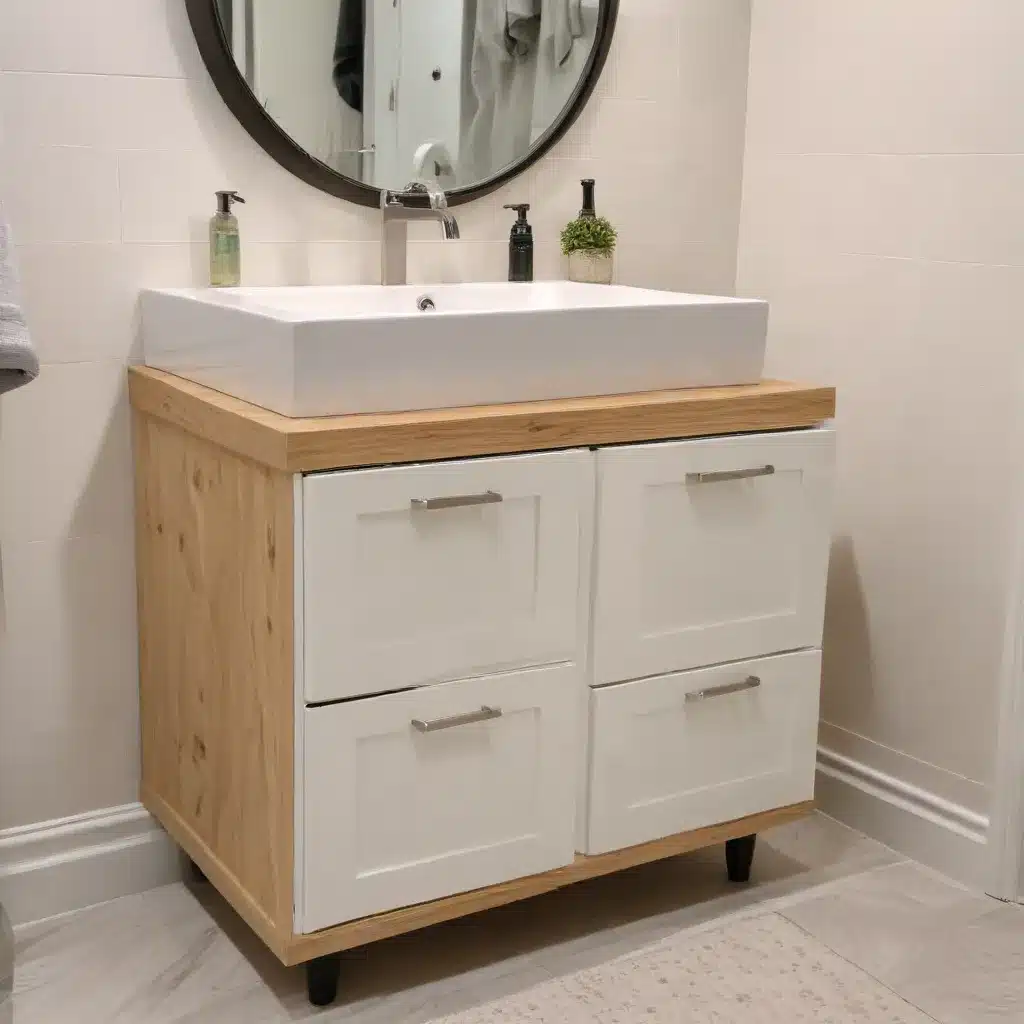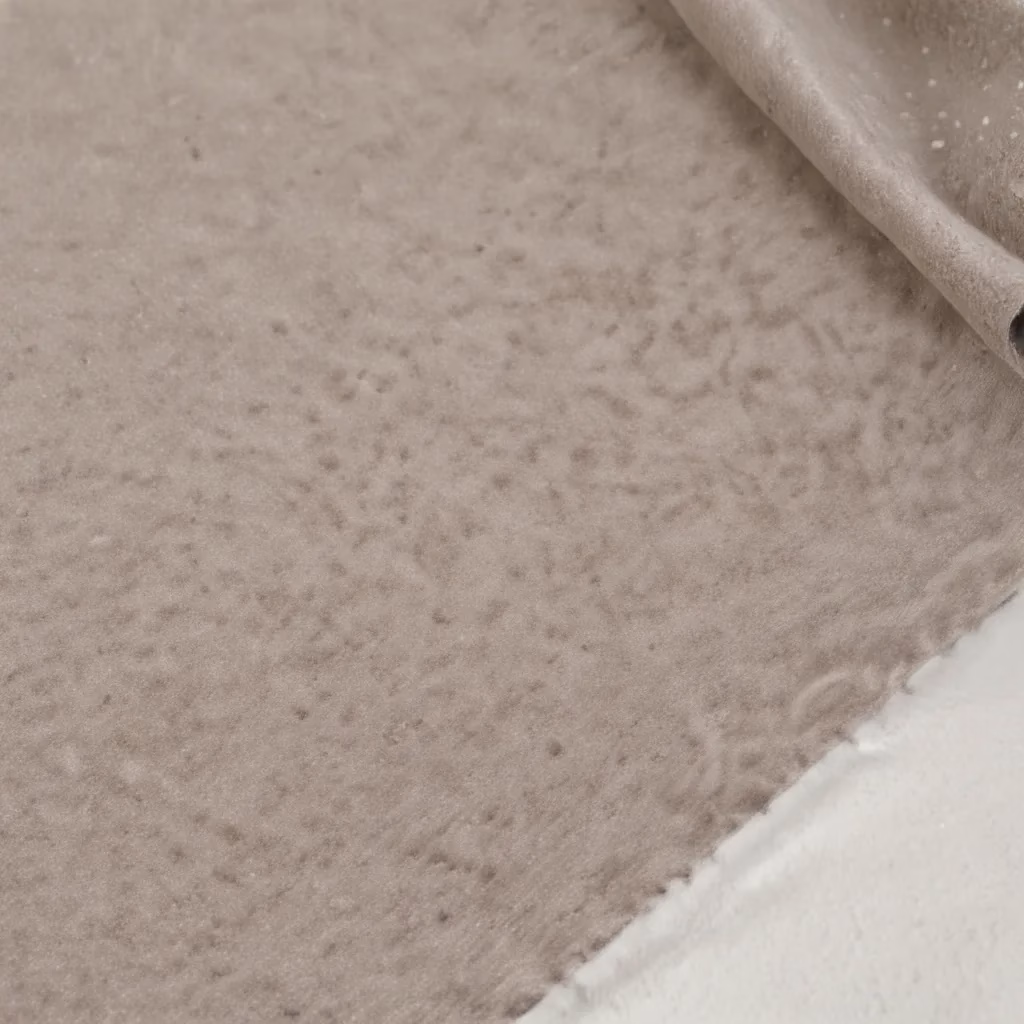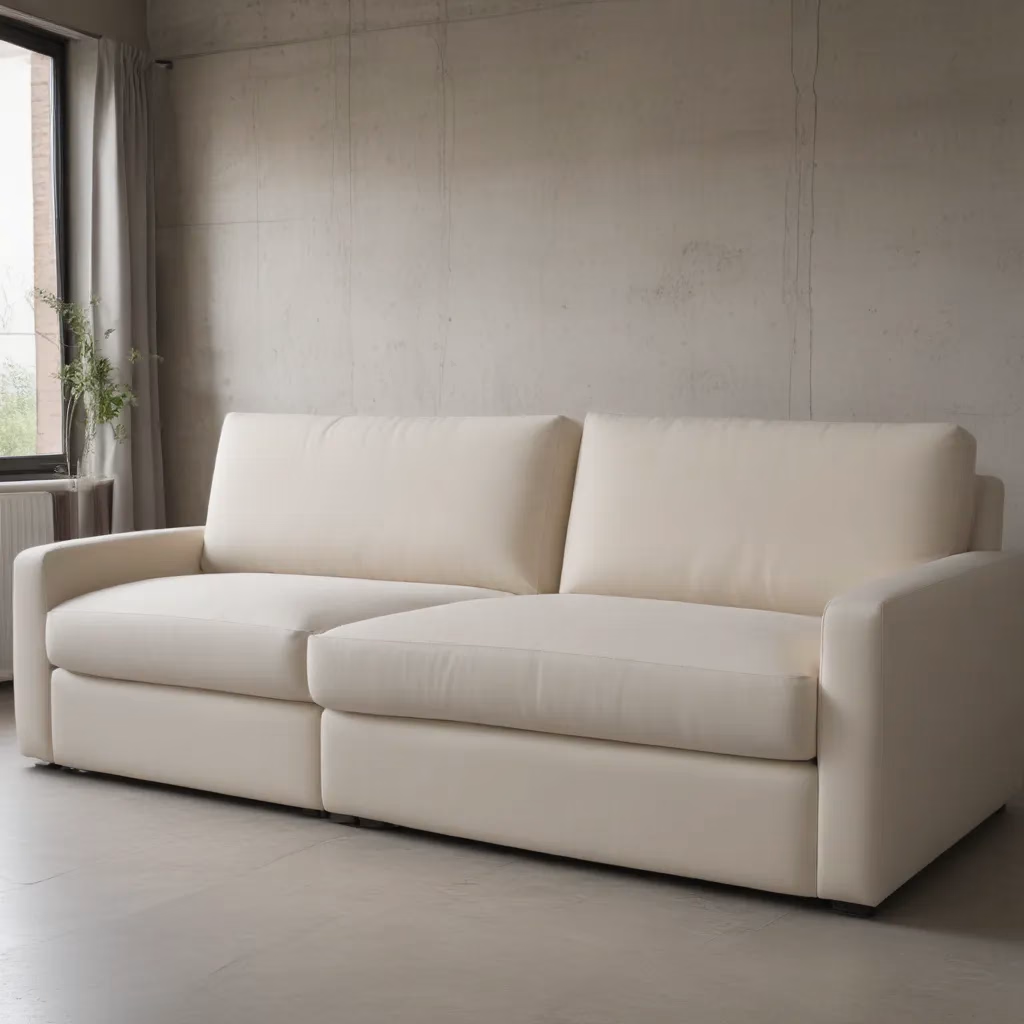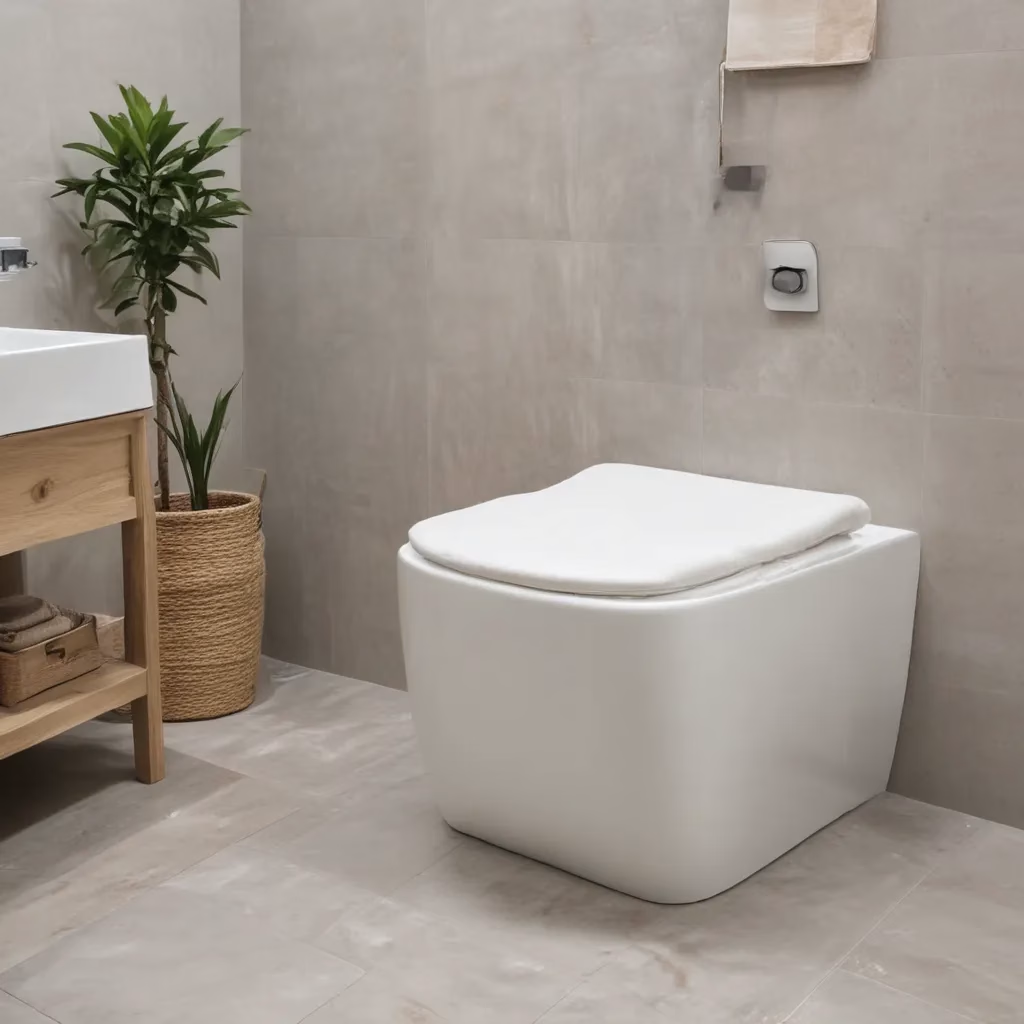
The Rise of Bathroom Furniture Customisation in the UK
In recent years, UK homeowners have been embracing the trend of repurposing existing furniture to create custom bathroom solutions. This approach not only allows for unique and personalised designs but also promotes sustainability by giving new life to old pieces. The movement towards customisation in bathroom interiors reflects a broader shift in British home decor preferences, with consumers seeking ways to express their individual style while maximising functionality in often limited spaces.
The concept of repurposing furniture for bathrooms has gained significant traction, particularly in urban areas where space is at a premium. Homeowners and interior designers alike are finding creative ways to transform various types of furniture into bespoke vanities, storage units, and other bathroom fixtures. This trend is not just about aesthetics; it’s also driven by practical considerations such as optimising storage, improving layout efficiency, and creating a cohesive design theme throughout the home.
One of the key advantages of this approach is the ability to tailor solutions to specific bathroom configurations. Unlike off-the-shelf bathroom furniture, which may not fit perfectly in every space, repurposed pieces can be adapted to work around existing plumbing, odd corners, or architectural features. This flexibility is particularly valuable in older properties with non-standard dimensions or in new builds where maximising every centimetre of space is crucial.
Selecting the Right Furniture for Bathroom Conversion
When considering furniture for bathroom conversion, it’s essential to choose pieces that can withstand the humid environment and frequent water exposure. Here are some factors to consider:
-
Material durability: Opt for furniture made from moisture-resistant materials such as solid wood, metal, or high-quality composites.
-
Size and scale: Ensure the piece fits comfortably within the bathroom space without overwhelming it or impeding movement.
-
Storage capacity: Look for items that offer ample storage options to help keep the bathroom organised.
-
Adaptability: Consider how easily the piece can be modified to accommodate plumbing and other bathroom essentials.
-
Style compatibility: Choose furniture that complements the overall aesthetic of your bathroom and home.
Here’s a comparison table of common furniture types suitable for bathroom conversion:
| Furniture Type | Pros | Cons | Best Used For |
|---|---|---|---|
| Dressers | Ample storage, sturdy construction | May require significant modification | Vanities, storage units |
| Sideboards | Wide top surface, built-in storage | Can be bulky in smaller bathrooms | Double vanities, linen storage |
| Console tables | Slim profile, often waterproof | Limited storage capacity | Single vanities, towel storage |
| Bookcases | Versatile shelving options | May need waterproofing treatment | Open storage, display units |
| Vintage cabinets | Unique character, often solid wood | Might require restoration | Statement vanities, medicine cabinets |
When selecting a piece for conversion, it’s crucial to consider both its current condition and its potential for transformation. Solid wood furniture is often a good choice due to its durability and ease of modification. However, it’s important to properly seal and protect the wood to ensure longevity in the bathroom environment.
Preparing Furniture for Bathroom Use
Once you’ve selected a suitable piece of furniture, proper preparation is key to ensuring its success as a bathroom fixture. This process typically involves several steps:
-
Thorough cleaning: Remove all dirt, grime, and old finishes to create a clean surface for modification and treatment.
-
Structural reinforcement: Assess the piece for any weak points or damage, and reinforce as necessary to withstand the weight of sinks, countertops, or plumbing fixtures.
-
Waterproofing: Apply appropriate sealants or waterproof coatings to protect the furniture from moisture damage. This is particularly important for wood pieces.
-
Modifying for plumbing: Create openings for pipes and drains, ensuring a snug fit to prevent water ingress.
-
Surface treatment: Refinish the exterior with water-resistant paint or varnish that complements your bathroom decor.
-
Hardware upgrades: Replace existing handles, knobs, or hinges with bathroom-appropriate alternatives that can withstand humid conditions.
It’s worth noting that while many DIY enthusiasts tackle these modifications themselves, complex conversions or valuable antique pieces may benefit from professional expertise. Many UK-based furniture restorers and carpenters now specialise in bathroom furniture conversions, offering services tailored to this growing trend.
Popular Conversion Ideas and Their Implementation
The possibilities for repurposing furniture into bathroom fixtures are vast. Here are some popular conversion ideas that have gained traction in the UK:
1. Dresser to Vanity Conversion
Transforming a dresser into a bathroom vanity is perhaps the most common and versatile conversion. This typically involves:
- Removing the top drawer(s) to accommodate plumbing
- Cutting holes in the top surface for sink and tap installation
- Reinforcing the structure to support the weight of the countertop and sink
- Applying a water-resistant finish to all surfaces
Many homeowners opt to replace the original top with a stone or composite countertop for added durability and a luxurious finish. This conversion works particularly well with vintage dressers, adding character and warmth to modern bathrooms.
2. Sideboard as a Double Vanity
For larger bathrooms or those shared by couples, sideboards can be excellent candidates for double vanity conversions. The process is similar to dresser conversions but often involves:
- Installing two sinks and sets of taps
- Creating separate plumbing access for each sink
- Potentially dividing the internal storage to create individual spaces
This option is particularly popular in family bathrooms or en-suites where multiple users need their own space and storage.
3. Console Table for a Minimalist Look
Console tables, with their slim profiles, are ideal for smaller bathrooms or powder rooms. Converting a console table typically focuses on:
- Reinforcing the structure to support a sink
- Creating a minimalist look with a vessel sink on top
- Utilising the open bottom for decorative storage or display
This style of conversion is perfect for those seeking a contemporary, airy feel in their bathroom design.
4. Bookcase for Open Storage
Repurposing a bookcase or shelving unit can add valuable storage to a bathroom without the need for extensive modification. Key considerations include:
- Treating all surfaces with moisture-resistant finishes
- Adding decorative boxes or baskets for concealed storage
- Incorporating towel bars or hooks on the sides
This type of conversion is particularly useful for renters or those looking for a less permanent solution, as it often requires minimal structural changes.
5. Vintage Cabinet as a Medicine Cabinet
Antique cabinets or small wardrobes can be transformed into charming medicine cabinets. This often involves:
- Adding a mirror to the door(s)
- Installing interior shelving for toiletries and medicines
- Ensuring proper wall mounting for safety and stability
These conversions add a unique focal point to the bathroom while providing practical storage for everyday essentials.
Integrating Repurposed Furniture into Bathroom Design
Successfully incorporating repurposed furniture into your bathroom design requires careful consideration of the overall aesthetic and functionality of the space. Here are some tips for seamless integration:
-
Colour coordination: Choose a colour palette that complements both the repurposed piece and the existing bathroom fixtures. This might involve repainting the furniture to match or contrast with the walls or tiles.
-
Hardware harmony: Select taps, handles, and other hardware that tie the repurposed piece to the rest of the bathroom. Mixing metals can create an eclectic look, but consistency often yields a more polished result.
-
Balancing old and new: If using a vintage piece, balance it with modern elements to create a cohesive look. For example, pair an antique dresser vanity with contemporary lighting fixtures or a sleek mirror.
-
Textural contrast: Incorporate different textures to add depth to your bathroom design. A rough wood vanity, for instance, can be beautifully offset by smooth porcelain fixtures and glossy tiles.
-
Functional layout: Ensure that the repurposed piece fits logically within the bathroom’s layout, allowing for easy movement and access to all facilities.
-
Lighting considerations: Adjust your lighting plan to highlight the repurposed furniture, treating it as a focal point of the room.
-
Accessorising thoughtfully: Choose bathroom accessories that complement the style of your repurposed furniture, creating a cohesive look throughout the space.
By carefully considering these elements, you can create a bathroom that feels both unique and well-designed, showcasing your repurposed furniture while maintaining functionality and style.
Maintenance and Care for Repurposed Bathroom Furniture
To ensure the longevity of your repurposed bathroom furniture, proper maintenance is essential. The humid environment of a bathroom can be challenging for furniture not originally designed for such conditions. Here are some tips for keeping your converted pieces in top condition:
-
Regular cleaning: Wipe down surfaces daily with a soft, damp cloth to prevent water spots and soap scum buildup. Avoid harsh chemical cleaners that may damage finishes.
-
Ventilation: Ensure your bathroom is well-ventilated to reduce moisture levels. Consider installing an extractor fan if you don’t already have one.
-
Immediate water removal: Quickly wipe up any standing water, particularly on wooden surfaces, to prevent damage and staining.
-
Periodic resealing: Depending on the type of sealant used, you may need to reapply every few years to maintain water resistance.
-
Check for water damage: Regularly inspect the furniture, especially around plumbing areas, for any signs of water ingress or swelling.
-
Tighten hardware: Periodically check and tighten any screws or bolts, as the moisture in bathrooms can cause them to loosen over time.
-
Touch-up finishes: Address any chips or scratches in the finish promptly to prevent moisture from penetrating the underlying material.
By following these maintenance practices, you can help ensure that your repurposed bathroom furniture remains beautiful and functional for years to come.
The Environmental Impact of Furniture Repurposing
One of the significant benefits of repurposing furniture for bathroom use is the positive environmental impact. This approach aligns with the growing focus on sustainability in UK home design. By giving new life to existing pieces, we reduce the demand for new production and keep usable items out of landfills.
Repurposing furniture contributes to sustainability in several ways:
-
Reduced waste: Extending the life of furniture pieces prevents them from ending up in landfills prematurely.
-
Lower carbon footprint: Repurposing requires fewer resources and energy compared to manufacturing new furniture.
-
Conservation of materials: Using existing furniture preserves the materials already invested in its production, such as wood from mature trees.
-
Decreased demand for new goods: Each repurposed piece potentially represents one less new item that needs to be produced and transported.
-
Promotion of circular economy principles: This approach encourages thinking about products in terms of their full lifecycle and potential for reuse.
For environmentally conscious consumers, repurposing furniture for bathroom use offers a way to create a unique space while aligning with their values. It’s an approach that combines creativity, practicality, and responsibility.
Challenges and Solutions in Furniture Repurposing
While repurposing furniture for bathroom use offers many benefits, it’s not without its challenges. Being aware of these potential issues and their solutions can help ensure a successful conversion:
Challenge 1: Moisture Resistance
Problem: Bathroom environments are high in humidity, which can damage furniture not designed for such conditions.
Solution: Apply high-quality, marine-grade sealants to all surfaces, especially on wood furniture. Consider using moisture-resistant materials for countertops and sink areas.
Challenge 2: Plumbing Integration
Problem: Existing furniture may not be designed to accommodate plumbing fixtures and pipes.
Solution: Work with a professional plumber to plan the best way to integrate necessary plumbing. Use flexible piping where possible to navigate around existing structures within the furniture.
Challenge 3: Weight Support
Problem: Some furniture pieces may not be sturdy enough to support the weight of sinks, countertops, or heavy use.
Solution: Reinforce the structure with additional supports. This might include adding a stronger base, installing wall brackets, or using internal bracing.
Challenge 4: Space Constraints
Problem: Repurposed furniture may not fit standard bathroom dimensions or layouts.
Solution: Carefully measure your space and consider modifying the furniture piece to fit. This might involve trimming depth or width or creating custom configurations.
Challenge 5: Maintaining Original Character
Problem: Over-modification can strip away the unique character that made the piece attractive for repurposing.
Solution: Strike a balance between necessary modifications and preserving original features. Where possible, maintain original hardware, finishes, or decorative elements to retain the piece’s charm.
By anticipating these challenges and planning accordingly, you can overcome common obstacles in furniture repurposing and create a beautiful, functional bathroom feature.
Cost Considerations and Value Analysis
When considering repurposing furniture for bathroom use, it’s important to weigh the costs against the potential value added to your home. While this approach can often be more cost-effective than purchasing new, custom bathroom furniture, there are several factors to consider:
Initial Costs:
- Furniture acquisition: If you’re not using a piece you already own, factor in the cost of purchasing a suitable item.
- Modification materials: This includes sealants, paints, hardware, and any replacement parts needed.
- Tools: Specialised tools may be required for certain modifications.
- Professional services: Costs for plumbing, carpentry, or other expert assistance if needed.
Potential Savings:
- Reduced furniture costs: Repurposed pieces are often less expensive than new, custom bathroom furniture.
- Lower installation fees: Some aspects of the installation may be simpler with repurposed furniture.
- Increased home value: Unique, well-executed bathroom features can add value to your property.
Value Considerations:
- Durability: A well-converted piece can last as long as purpose-built bathroom furniture.
- Uniqueness: The one-of-a-kind nature of repurposed furniture can be a significant value add.
- Flexibility: The ability to customise the piece exactly to your needs and space can be invaluable.
To help visualise the potential costs and savings, consider this comparative table:
| Aspect | New Custom Vanity | Repurposed Furniture Vanity |
|---|---|---|
| Initial Cost | £800 – £2000+ | £200 – £800 (including modifications) |
| Installation | £200 – £500 | £100 – £300 |
| Durability | 10-20 years | 10-20 years (with proper care) |
| Uniqueness | Limited | High |
| Customisation | Moderate | High |
| Potential Value Add | Moderate | High (if well-executed) |
While the exact figures can vary widely based on the specific project and materials chosen, this comparison illustrates that repurposing furniture can often be a cost-effective choice, particularly when factoring in the added value of a unique, personalised bathroom feature.
It’s worth noting that the true value of repurposed furniture often extends beyond mere financial considerations. The satisfaction of creating a unique piece, the environmental benefits, and the ability to preserve and showcase a cherished item all contribute to the overall value of this approach.
Future Trends in Bathroom Furniture Repurposing
As we look to the future of bathroom design in the UK, the trend of repurposing furniture is likely to evolve and expand. Several emerging trends suggest exciting possibilities for this approach:
-
Smart technology integration: As smart home technology becomes more prevalent, we may see repurposed furniture incorporating built-in speakers, lighting controls, or even digital displays.
-
Eco-friendly materials: The use of reclaimed or sustainably sourced materials in furniture repurposing is likely to increase, aligning with growing environmental concerns.
-
Multifunctional designs: Future repurposed pieces may serve multiple purposes, such as a vanity that converts into a dressing table or a storage unit that includes a fold-out laundry station.
-
Industrial chic: The trend of repurposing industrial furniture or materials for bathroom use is gaining traction, bringing a raw, urban aesthetic to home bathrooms.
-
Modular adaptability: We may see more modular approaches to repurposing, allowing for easier updates or reconfigurations as needs change.
-
Artisanal collaborations: Partnerships between furniture restorers and local artisans could lead to unique, handcrafted elements being incorporated into repurposed bathroom furniture.
-
Vintage tech revival: There’s growing interest in incorporating vintage technology into bathroom design, such as repurposing old radios or televisions as quirky storage or display units.
As these trends develop, the possibilities for creating unique, functional, and stylish bathrooms through furniture repurposing will continue to expand. This approach not only allows for personal expression in home design but also supports sustainable practices in interior decoration.
The future of bathroom design in the UK looks set to embrace individuality, sustainability, and creativity, with repurposed furniture playing a significant role in shaping these spaces. As homeowners and designers continue to push the boundaries of what’s possible, we can expect to see even more innovative and inspiring bathroom transformations in the years to come.
For those interested in exploring the latest in sofa and furniture trends beyond the bathroom, SofaSpectacular offers a wealth of information and inspiration for other areas of the home. Their range of contemporary and classic designs can complement your repurposed bathroom furniture, creating a cohesive look throughout your living spaces.
Conclusion: Embracing Creativity in Bathroom Design
The trend of repurposing furniture for custom bathroom solutions represents a significant shift in how UK homeowners approach interior design. This movement towards personalisation, sustainability, and creative problem-solving is reshaping our bathrooms into unique spaces that reflect individual style and values.
By transforming existing furniture into bespoke bathroom features, we not only create one-of-a-kind interiors but also contribute to a more sustainable approach to home renovation. The process of repurposing allows us to breathe new life into old pieces, reducing waste and minimising our environmental impact.
The versatility of this approach means that regardless of your bathroom’s size, style, or specific needs, there’s likely a repurposing solution that can enhance both its functionality and aesthetic appeal. From vintage dressers turned into elegant vanities to industrial cabinets repurposed as statement storage units, the possibilities are limited only by imagination and ingenuity.
As we’ve explored, successful furniture repurposing for bathrooms involves careful consideration of materials, proper preparation, and thoughtful integration into the overall design scheme. While there are challenges to overcome, the rewards in terms of uniqueness, sustainability, and potential cost savings make this an appealing option for many.
Looking ahead, the trend of repurposing furniture for bathrooms is likely to continue evolving, incorporating new technologies, materials, and design concepts. This ongoing innovation ensures that our bathrooms can remain both functional and expressive, adapting to our changing needs and preferences over time.
Ultimately, the rise of furniture repurposing in bathroom design reflects a broader desire for homes that are not just lived in, but truly personalised. It’s an approach that celebrates creativity, values history, and looks to the future – all while creating beautiful, functional spaces for our daily routines.
For those inspired to embark on their own bathroom transformation journey, remember that the key to success lies in balancing practicality with personal style. Whether you’re working with a cherished family heirloom or a flea market find, the process of repurposing allows you to create a bathroom that is uniquely yours, telling your story through thoughtful design and creative reuse.
As we continue to redefine our living spaces, the bathroom stands out as an area ripe for personal expression and innovative design. By embracing the potential of repurposed furniture, we open up a world of possibilities for creating bathrooms that are not just functional, but truly spectacular.



